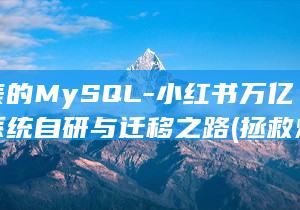在虚拟机上再部署虚拟机-嵌套虚拟化的强大功能 (在虚拟机上再安装软件)
QEMU (Quick Emulator) is an open-source emulator and virtualization tool that supports multiple architectures and hardware platforms.It can emulate an entire computer system, including the processor, memory, storage devices, and various peripherals.
History and Evolution

QEMU was initially designed as an emulator that could simulate computer systems with different architectures. Later, it evolved into a powerful virtualization tool capable of running virtual machines on different host systems, such as Linux, Windows, and macOS.
QEMU offers high flexibility and customization, allowing users to configure and manage virtual machines in a fine-grained manner. It can operate in environments without hardware virtualization, enabling scenarios such as running the X system ona virtual machine or running an ARM system on an x86 machine.
Applications
QEMU is widely used in various fields, including:
- Development and testing
- Embedded systems
- Cloud computing
Running Modes
QEMU primarily operates in two different modes:
Hardware-Assisted Mode
This mode leverages hardware virtualization extensions, such as Intel VT-x or AMD-V, to provide virtualization capabilities. It offers better performance and compatibility with specific hardware components.
System Emulation Mode
This mode does not rely on hardware virtualization and instead emulates the entire hardware system, including the processor and peripherals. It allows QEMU to run on a wider range of host systems but may result in lower performance.
Virtual Machine Disk Formats
QEMU supports various virtual machine disk formats, each with its own characteristics and advantages:
- Qcow2 (QEMU Copy On Write 2): A widely used format that supports snapshotting, dynamic space allocation (thin provisioning), and compression.
- VMDK (Virtual Machine Disk): The standard disk format for VMware virtual machines. QEMU can read and convert VMDK disk images.
- VHD (Virtual Hard Disk): The disk format used by Microsoft Hyper-V and VirtualBox. QEMU can also read and convert VHD disk images.
- RAW (Raw Image): A raw disk image format that does not undergo any compression or special processing. QEMU can directly read RAW image files.
- QCOW (QEMU Copy On Write): An older disk format used by early versions of QEMU, now superseded by Qcow2. However, QEMU can still handle disk images in this format.
QEMU can also work with or convert to other formats, such as VDI (VirtualBox Disk Image), IMG, and ISO.
Emulating a Virtual Machine Within a Virtual Machine
QEMU's versatility allows it to run multiple layers of virtualization. For example, one can create a virtual machine on a host system and then use QEMU within that virtual machine to run another virtual machine.
This technique is often used in situations where hardware interaction is not essential, such as embedded systems development, where developers can simulate the behavior of embedded systems directly on their host systems.
Conclusion
QEMU is a powerful and flexible tool that enables users to create and manage virtual machines for various purposes. Its support for multiple architectures, operating systems, and disk formats makes it a versatile solution for developers, testers, and researchers.
Whether you are looking to emulate a legacy system, run multiple operating systems simultaneously, or develop embedded software, QEMU provides a comprehensive and effective solution.
哪家公有云支持嵌套虚拟化
Azure。 Azure新一代的机器支持嵌套虚拟化,使问题有了更好的解决方法。 嵌套虚拟化就是在基于宿主机A搭建的虚拟机B上再跑一个虚拟机C,主要问题在于,虚拟机B是否支持硬件虚拟化,否则KVM无法启用。
在虚拟机里还能再装虚拟机吗?
可以的,不过你的虚拟机要开启“虚拟化引擎”中的“虚拟化”功能,如果你的物理机器性能不是很好,不建议在虚拟机里安装虚拟机,因为那样体验会比较差。 楼主是想用虚拟机安装Linux系统用来学习吗?如果是的话,可以网络《Linux就该这么学》,里面有具体讲解如何用虚拟机安装Linux系统,只要照着书本一步步操作就可以了。
免责声明:本文转载或采集自网络,版权归原作者所有。本网站刊发此文旨在传递更多信息,并不代表本网赞同其观点和对其真实性负责。如涉及版权、内容等问题,请联系本网,我们将在第一时间删除。同时,本网站不对所刊发内容的准确性、真实性、完整性、及时性、原创性等进行保证,请读者仅作参考,并请自行核实相关内容。对于因使用或依赖本文内容所产生的任何直接或间接损失,本网站不承担任何责任。





